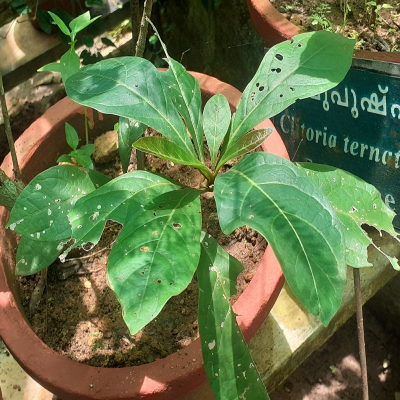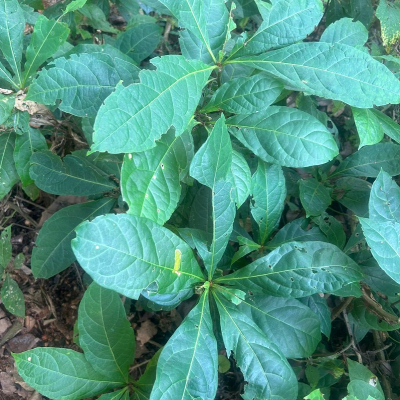Terminalia bellirica (Gaertn.) Roxb.
Family : Combretaceae
Group : 3. Thriphala, Rejuvenatives, Cardio tonic, Eye diseases
Parts Used : Fruit , Bark , kernal
Vernacular Names :-
| English | : | Belliric myrobalan |
| Malayalam | : | Thanni |
| Hindi | : | Bulla |
| Sanskrit | : | Aksah |
| Bengali | : | Bahera |
| Kannada | : | Vibhita |
| Tamil | : | Tani |
| Telungu | : | Bhutavasamu |
Distribution and habitat: Throughout India, upto 900 m above MSL.
Botany: A large deciduous buttressed tree, 20-30 m in height with thick brownish grey bark having shallow longitudinal fissures;
- Leaves : Simple, Alternate, Long petiole, Crowded about the extremities of the branches, broadly elliptic, margins entire, main nerves 6-8 pairs, midrib prominent on both surfaces;
- Flowers : Pale greenish yellow with an offensive odour, in axillary spikes, longer than the petioles but shorter than the leaves.
- Fruits : Ovoid grey drupes, 1.5-2.5 cm in diameter, obscurely 5-angled, narrowed into a very short stalk.
Chemical constituents: Furits contain b-sitosterol, gallic and ellagic acids, ethyl gallate, galloyl glucose, chebulagic acid and a cardiac glucoside bellericanin.
Properties: Fruit has anti cancerous property and flower has spermicidal activity. Bark is a mild diuretic. Fruit is astringent, antidropsical, antileprotic, anti-inflammatory, antidiarrhoeal, antibilious, stomachic, antiasthmatic, tonic, anticephalgic, bechic, anthelmintic and attenuant. Kernel is narcotic. Semi-ripe fruit is purgative. Gum is demulcent.
Uses: Fruit rind is one of the components of Triphala. It is used in anaemia, leucoderma, inflammatory, narcotic, antipyretic, cough, asthma, bronchitis, insomnia, dropsy, flatulence, dipsia, vomiting, cardiac disorders, haemorrhages, ophthalmic disorders, cephalalgia, leprosy, skin diseases, dyspepsia, urinary calculus, eye diseases and greyness of hair.
Formulations: Partharishta, Bibhiak–taila, Triphala-churna; Talisadi-churna, Sudarsan-churna; Agnitundi-vati
Agro technology
Soil: Deep sandy loam soil with good subsoil drainage
Propagation: Seeds, root-shoot cuttings or stump planting
Seed collection and sowing : Seeds are collected in winter, pulp is removed immediately and seeds are dried in the sun. Seeds are soaked in water for a week and germination happens in 3-40 days. Seeds retain viability for one year. Sowing is done in nursery in March-April in line spaced at 20 cm.
Stumps: 12-15 month old plants provide satisfactory stumps.
Planting: Planting is done in June-July when seedlings are 3-4 months old. Planting is done in the pits of 30 cm3 size. The spacing adopted may vary from 3 x 3 m to 10 -15 m both ways.



